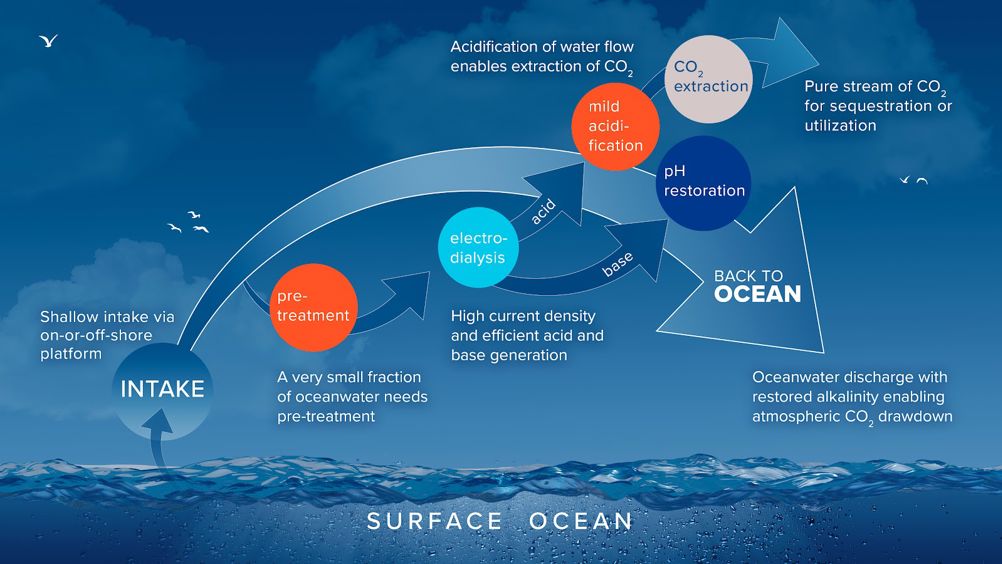The UN’s Intergovernmental Panel on Climate Change (IPCC) is charged with preparing Assessment Reports (ARs) on the state of knowledge on climate change at regular intervals. The latest contribution to AR6 was released earlier this year and made clear that carbon dioxide removal (CDR) will be essential if net-zero CO2 is to be achieved.
AR6 is particularly optimistic about bioenergy with carbon capture and storage (BECCS) delivering substantial volumes of CDR. However, BECCS has had a rough ride over the past few months, with the DRAX facility in the UK the subject of a BBC Panorama investigation alleging that their logging licences covered two areas of environmentally important forest. A subsequently released report detailing 30 criteria for making BECCS a success has also attracted attention.
In any case, the CDR sector is diversifying, thanks in part to the ongoing XPRIZE Carbon Removal Competition that seeks to kickstart CDR solutions capable of sustainably reaching gigatonne-per-year scale. Two Milestone Award winners, receiving $1m at an intermediate stage of the competition, are Captura and Planetary; they are both focussing on engineered ocean solutions to capture CO2.
What the oceans are very effective at, thanks to their enormous surface area, is absorbing atmospheric CO2. Henry’s law means that as the atmospheric CO2 concentration increases, the oceanic CO2 concentration increases in proportion. They already provide a huge atmospheric CO2 sink: absorbing around 25% of the atmospheric CO2 emitted by human activities each year (although the effects of this on ocean life are frightful).
Captura and Planetary are seeking to harness this power without exacerbating the ocean acidification problem we are already facing.
Fishing for carbon with Captura
Captura’s process involves the intake of a stream of ocean water, from which CO2 is drawn off as a gas stream, with the low-CO2 stream then being discharged to the ocean to facilitate further drawdown of CO2 in the atmosphere in accordance with Henry’s law.
The process relies on electrodialysis of brine to produce acid and base streams. The acid stream is added to the ocean water first, causing evolution of gaseous CO2 that can be captured, with the base subsequently being added to (almost) restore the pH of the now low-CO2 ocean water. The captured CO2 can be transported for permanent storage, typically via sequestration.

Captura are hoping that substituting the enormous air contactors of DAC systems with the ocean surface, and the substantially higher CO2 concentration in seawater compared to air, will make their process highly competitive on a cost-per-tonne of CO2 basis and straightforward to scale up.
However, a perennial problem for all ‘engineered’ CDR solutions is the need to improve the CO2 efficiency of their processes. CO2 emissions associated with engineered CDR solutions primarily arise from the generation of the energy to power these processes and the production of materials they use. To combat the first, Captura’s pilot plant is running on solar power. The second is a harder problem to solve, but they are already looking to partner with desalination plants in order to utilise the brine these plants produce as a waste product. Continuing to nudge the efficiency figures upwards will be key to its large-scale viability.
Planetary – Back to Basic
Planetary’s approach relies on a process known as Ocean Alkalinity Enhancement. Making oceans more alkaline promotes the reaction of dissolved CO2 to (bi)carbonate ions that can then be mineralised, reducing the CO2 concentration of the oceans, which can then absorb more atmospheric CO2 to restore the Henry’s law equilibrium.
However, Planetary are not only seeking to reduce atmospheric CO2 concentration with their Accelerated Carbon Transition (ACT) platform but want to provide several co-benefits as well. Across the globe, over 3 billion tonnes of metal ore is mined each year, which results in around 12 km3 of mine tailings. The ACT platform is seeking to do something about. Electro-geochemical processing of mine tailings with water and a renewable energy source allows Planetary to generate the necessary base to add to the ocean to enhance its alkalinity, whilst also producing valuable by-products.
Planetary’s approach is not without its challenges. Beyond concerns about the other impacts of substantially increasing local ocean alkalinity, Planetary also acknowledges the need to ensure that the monitoring, reporting and verification of atmospheric CO2 reductions resulting from its process are watertight.
Go forth and multiply
Whilst promising on paper, the real question will be whether Captura or Planetary will be able to scale up in time to reach the 1000 t yr-1 threshold to be in the running for the XPRIZE grand prize in 2025 and the $50m that comes with it.
Whatever the outcome of the XPRIZE, the CDR industry needs to continue pursuing all the different avenues for sucking CO2 from the skies if we are to hit the 10 Gt yr-1 target for 2050.

Rob Walker is Patent Technical Assistant at Mewburn Ellis











IET sounds warning on AI doll trend
I agree that we need to reduce cooling water demand for servers. And yes, generative AI consumes a large amount. But what about BitCoins? Their...